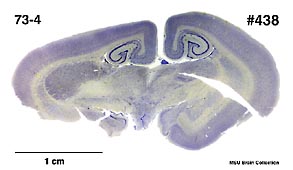|
Platypus
(Ornithorhynchus anatinus) #73-4 |
||||
|
|
Physical
characteristics and distribution
|
|
The body is streamlined and compressed dorsoventrally. The snout is a muzzle shape similar to the bill of a duck. Platypuses have a tail shaped like that of a beaver, and webbed fore- and hindfeet. Males are larger than females. Range in lengths from 56 cm to 47.5 cm. Females have two sets of ventrally located mammary glands, one on each side of the midline about halfway down the body. The male Platypus has venomous ankle spurs, used in vicious territorial battles and fights over mates. The Platypus is one of the few mammals known to have a sense of electroception: it locates its prey in part by detecting their body electricity. Its electroception is the most sensitive of any mammal. The Platypus is a carnivore. It feeds on annelid worms and insect larvae, freshwater shrimps, and yabbies (freshwater crayfish) that it digs out of the riverbed with its snout or catches while swimming. Its bill is very sensitive, allowing it to hunt its food without using sight. The Platypus needs to eat at least a quarter of its own weight every day. This requires the Platypus to spend about 10 hours each day looking for food. When not in the water, the platypus retires to a short, straight burrow of oval cross-section, nearly always in the riverbank not far above water level, and often hidden under a protective tangle of roots. The female reproductive organs consist of paired ovaries enclosed by paired thin infundibular funnels; paired oviducts; paired uteri, each of which communicates separately with a long median unpaired urogenital sinus. The elongated urogenital sinus communicates with the cloaca; thus eggs, urine, and feces pass out through the one cloacal sphincter (hence the name Monotremata). Platypuses and echidnas differ from all other mammals in that females lay eggs and do not give birth to their young. Females lay between one to three eggs, which are normally incubated for 6 to 10 days. Platypus' live mostly in streams, rivers and some lakes which have permanent water and banks suitable for burrows. The Platypus is nocturnal and semi-aquatic. They are found in water with temperatures varying from 25 - 29.9 degrees Celsius. They are found in Queensland, New South Wales, SE South Australia, Victoria, and Tasmania (Australia). |
|
Description
of the brain
|
|
The brain of the Platypus is small and is made up of two smooth cerebral hemispheres. |
|
Animal
source and preparation
|
|
Our specimens were obtained by Dr. Richard Lende in order to study the patterns of organization of their sensory and motor regions of cerebral neocortex. All specimens collected followed the same preparation and histological procedure. |
Other
Related Resources (websites and publications)
List of Specimens | Explore Collections | Brain Sections | Brain Evolution | Brain Development | Brain Circuitry | Brain Functions | Location and Use | Related Web Sites | Contact Us | Search MSU Database | Personnel | Home



